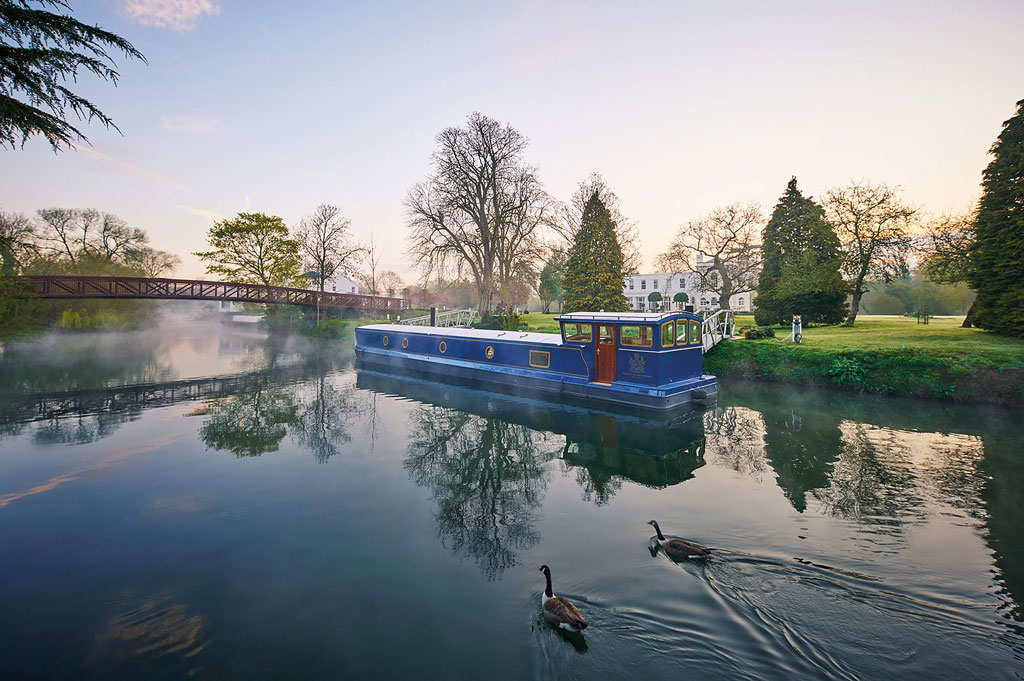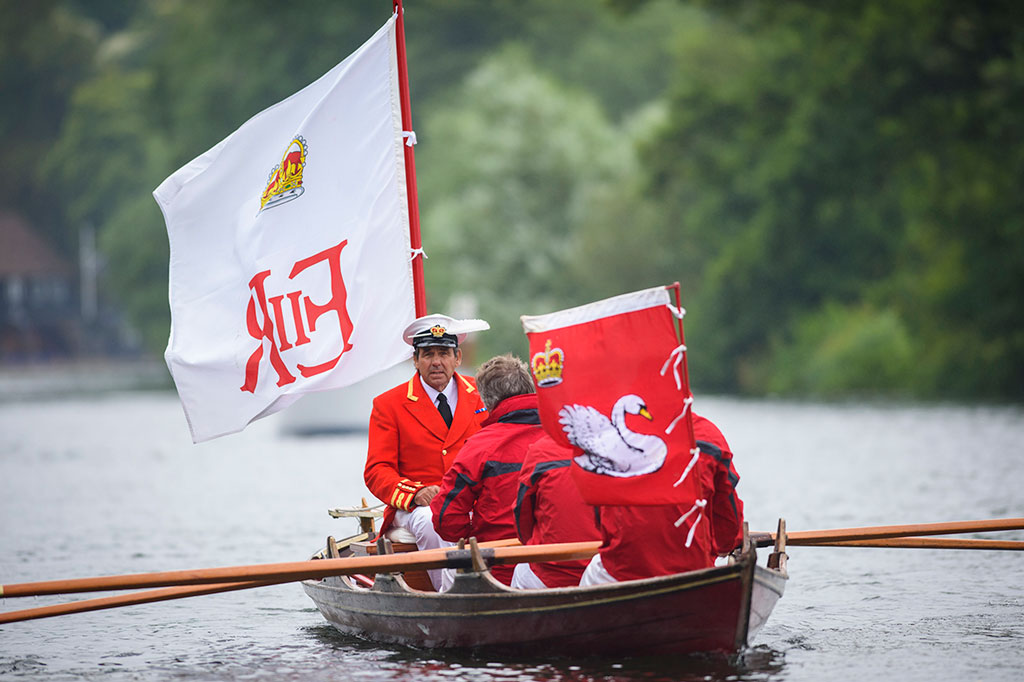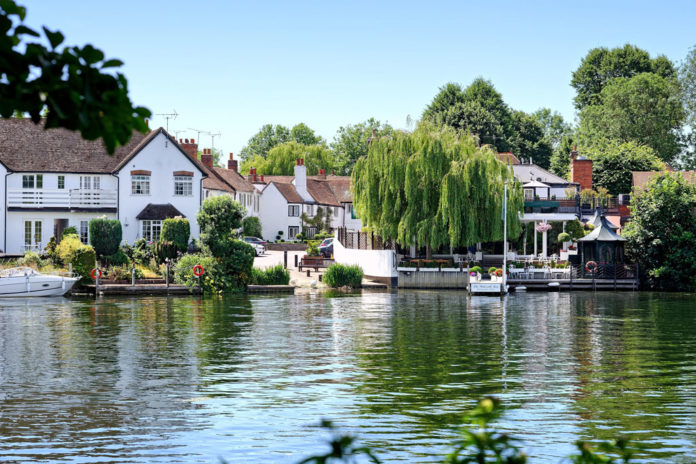It’s renowned for its Michelin-star restaurants, but this riverside idyll has much more in store
It’s not immediately obvious why the 16th-century Thameside village of Bray in Berkshire is one of the world’s gastronomic capitals. A sleepy place, its only landmark is an ancient flint church that hosts teas in the village hall on Sunday afternoons. Lanes of comely cottages fronted by flower-filled gardens up the quaint factor, while riverside mansions give the village an air of moneyed ease.
Remarkably, this small village holds two of Britain’s three Michelin-star restaurants
– perhaps thanks to its proximity both to London and “millionaire’s row”, as this stretch of the river is known.
Heston Blumenthal’s Fat Duck in the heart of the village is beloved of critics and gourmets for its highly experimental cuisine. Guests embark on a ‘journey’ rather than
a mere meal, with the food a visual and olfactory experience designed to provoke
a sense of nostalgia for childhood holidays.
A mere crouton’s throw away is Alain Roux’s Waterside Inn, an elegant temple
to contemporary French cooking, with a dreamy terrace right on the river.
The river, indeed, is Bray’s real draw. After a wander through the village (and, why not, a slap-up meal), it’s time to explore. This beautiful section of the Thames is relatively unspoilt: a lush, sun-dappled stretch that calls to mind Three Men in a Boat, Jerome K Jerome’s 1889 account of a trip down the river taken by the hapless heroes of the title. The humorous mishaps of the trio (plus dog Montmorency) include an episode that takes place just downriver of Bray, at Monkey Island. Having moored up for a picnic, they unpack a tin of pineapple only to realise that they’ve forgotten a tin-opener. There follows “a fearful battle” in which they attempt to open it by force, but the tin remains stubbornly closed, eventually meeting a watery end when it is lobbed furiously into the Thames.

The three would find the island quite a different place these days. This seven-acre eyot (as the Thames’ islets are known) now harbours a luxury hotel that exudes Gatsby-ish glamour. Monkey Island Estate has its own floating spa and a sleek launch, Dragonfly, that glides guests down the river, allowing glimpses of the kingfishers that flit along the willow-fringed banks, and of the manicured lawns that stretch up to grand houses.
The island’s unusual moniker was first thought to have come from its 12th-century visitors, a group of monks (hence Monks Eyot). Used by the Church for centuries, it was bought in 1723 by Charles Spencer, the 3rd Duke of Marlborough, who fancied this scenic spot as his private fishing retreat. He commissioned two Palladian buildings here, the Temple and the Pavilion. The latter – now the hotel’s lounge – has an extraordinary ceiling entirely decorated in singerie: depictions of monkeys aping human behaviour, an artistic style that was fashionable in France in the 18th century.

Back on the river, you can rent a boat and go with the flow, or row upriver like Jerome’s heroes, who enjoyed a rare moment of peace at nearby Cliveden: the woods here “rose up from the water’s edge, in one long harmony of blended shades of fairy green. In its unbroken loveliness this is, perhaps, the sweetest stretch of all the river”. The afternoon tea at Cliveden House, once a ducal residence, now a luxury hotel, is pretty sweet too: bite-sized delicacies themed around red velvet cake.
On the opposite bank of the river is pretty Cookham, home of the artist Sir Stanley Spencer, one of the greatest British painters of the 20th century. A dedicated gallery includes depictions of this “village in heaven”, the artist’s favourite place on earth. One of his subjects was the annual Swan Upping ceremony in July, when the scarlet-clad Royal Swankeeper carries out a census of the local swan population: a ritual that dates back to the 12th century, when the Crown claimed ownership of all mute swans.
Some six miles downstream, in contrast to the quiet backwaters and quaint villages along this stretch of the river, is Windsor, boasting the largest and oldest occupied castle in the world. The residence of 39 monarchs, it is said to be the Queen’s favourite home,
where she spends most weekends.
Much of the castle is open to the public; highlights include Queen Mary’s famous dolls’ house and St George’s Chapel, site of 2018’s wedding of Prince Harry to Meghan Markle. Time your visit to coincide with the Changing the Guard ceremony (see www.rct.uk/visit/windsor-castle), when colourfully attired soldiers march through town and into the castle, led by a regimental brass band.
Getting there & around
Trains run from London Paddington to Maidenhead (25-40min), from where it’s a 5-minute taxi ride to Bray. Fringilla rent boats for trips down the Thames.
www.thetrainline.com; www.fringilla.co.uk
Eat, drink, sleep
The newly restored Monkey Island Estate, on a sliver of land on the Thames, has an impressive roster of historic guests, including Edward VII, Edward Elgar, Nellie Melba and HG Wells. It’s a short walk across well-tended lawns from the luxurious Art Deco rooms to the restaurant, with a menu of British classics.
If you’re treating yourself to a meal at one of Bray’s Michelin-starred establishments, book months in advance. The Fat Duck is the one for adventurous diners, while for a classic French feast, the Waterside Inn won’t disappoint.
www.monkeyislandestate.co.uk; www.thefatduck.co.uk; www.waterside-inn.co.uk
FURTHER INFORMATION






 © 2024
© 2024